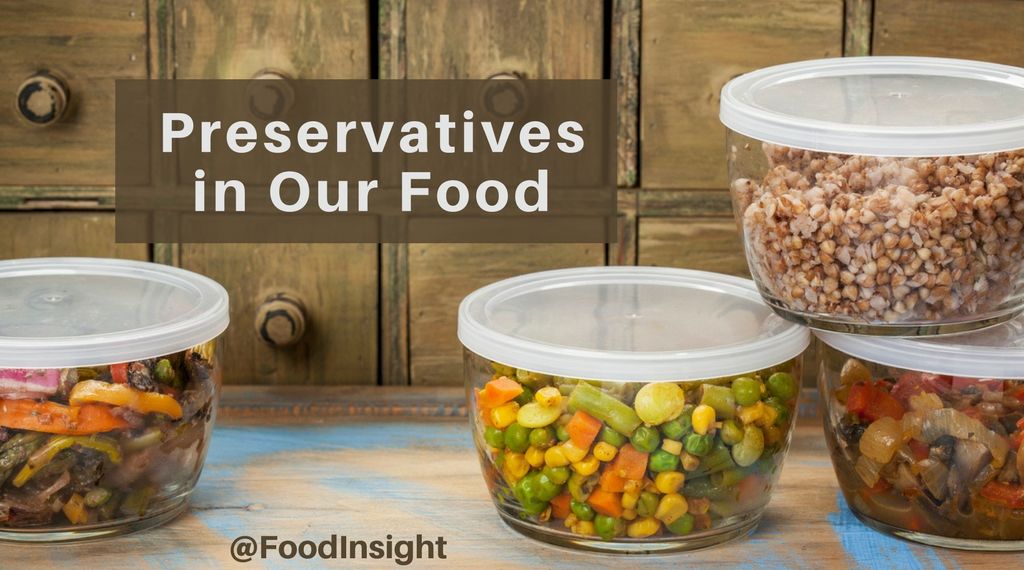On Sunday mornings, you make your grocery list before heading to the store. It is easier to get your fill of fresh produce and healthier foods by performing this simple task.
As the days pass, you make your meals. Almost inevitably though, by Thursday evening, you are exhausted, and it unsurprisingly becomes pizza or Chinese take-out night. Then, ingredients that should have been Thursday’s meal sit in the fridge or on the shelves until you find the vigor to cook again. Sound familiar? Luckily, preservatives help keep that food safe until you are ready to prepare your next meal.
Preservatives help extend the quality and safety of food far beyond what is capable without their use. Let’s jump in and discover some basics of food preservation and how preservatives are used in food.
So, what is food preservation?
Food preservation is generally defined as any act or addition that inhibits undesired bacterial growth or chemical changes. You likely practice food preservation on a daily basis without even knowing it.
There are two categories of preservation: chemical and physical. When you wash your raw produce or freeze your chicken, you are practicing physical preservation. Curing and pickling are examples of chemical preservation, using salt and vinegar (acetic acid) in these cases. Foods are often processed in a way that acts as a physical preservative to guarantee we have safe foods that last longer.
Why are preservatives used in food?
As mentioned in our Thursday evening dilemma, preservatives allow us to keep food safe much longer. Preservatives might inhibit oil from going rancid or could help a product retain its original color. All these benefits allow us to keep food safe and nutritious for far longer.
This leads us into an often-overlooked benefit of food preservatives; they reduce food waste. According to estimates by the Environmental Protection Agency (EPA), Americans toss out 35 million tons of food each year. When we can extend the shelf-life of products, we reduce the need to throw food out: a win-win for the environment and our pocketbooks.
Preservatives can also have nutritive roles as well. Take ascorbic acid as an example; it is a powerful antioxidant and antimicrobial compound that is added to everything from bacon to carbonated drinks. But did you know it is also an essential nutrient in diet? Ascorbic acid, more commonly known as vitamin C, can both preserve foods and directly satisfy nutrient requirements. The next time you see the chemical name of the label, know you are getting your fill of the sunshine vitamin!
One of the biggest benefits of preservatives is increased food safety. Many natural and living microorganisms are capable of producing toxins that can increase the risk of many diseases. Ask yourself this: have you heard of a friend getting ill from botulinum poisoning in sausage? What about catching tuberculosis from drinking milk? It may sound ridiculous, but these were both deadly diseases at one time. Food preservation is such an integral part of why these risks are mitigated. Nitrites are added to cured meats to stop Clostridium botulinum growth, and pasteurization has effectively addressed the presence of Mycobacterium tuberculosis in fluid milk.
What are they called?
Many times, preservatives might have intimidating names on food labels like BHA, TBHQ, or even spooky ascorbic acid (vitamin C in disguise). They don’t necessarily roll off the tongue, but the names are likely one of the following: a salt (sodium benzoate, calcium propionate, sodium erythorbate, sodium nitrite, calcium sorbate), a vitamin (ascorbic acid or tocopherols), or an antioxidant (BHA – butylated hydroxyanisole, BHT – Butylated hydroxytoluene, EDTA – Ethylenediaminetetraacetic acid). Each preservative has a highly specific function when added, so do not fear!
Are preservatives safe for me and my family? Absolutely!
This is one of the most commonly asked questions about many of the unfamiliar ingredients being used in food. In fact, the U.S. Food and Drug Administration (FDA) confirms the safe use of the preservatives used in food and beverages today. Preservatives (whether it is an artificial or naturally sourced food ingredient or an additive) must pass rigorous evaluation for their safe use. This evaluation requires a dossier containing the scientific evaluation of the safety of the ingredient. Once the FDA reviews the data, an ingredient can be deemed safe and given a status confirming that. This status is known as “Generally Recognized as Safe” or “GRAS” certification, which means it is certified and managed by the FDA. Check out the Food Ingredients’ Journey to learn more about the GRAS process.
The next time you are at the grocery store or even browsing through your pantry, check the ingredients list to see if you can identify any preservatives in your food. Those preservatives help extend the shelf-life of your food for the inevitable night when pizza (instead of the meal you planned to cook) sounds way easier for the evening.
Jacob Farr and Eddie Orzechowski contributed to this post.
Additional Resources:
